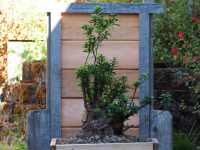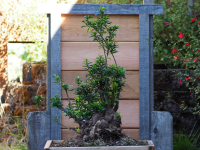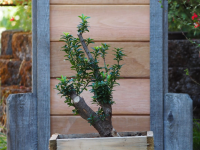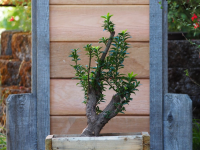Andrew Luce
Seed
- Messages
- 2
- Reaction score
- 0
Ilex crenata, commonly known as Japanese holly, is a versatile and ornamental evergreen shrub that holds a significant place in horticulture and landscaping. This species, belonging to the genus Ilex, exhibits unique characteristics and features that make it a popular choice for various purposes.
Ilex crenata, also referred to as Japanese holly, is an evergreen shrub renowned for its distinctive features and versatility. Known for its dense foliage and adaptability, this species has become a staple in gardens and landscapes around the world.
This shrub is characterized by its glossy, dark green leaves and compact growth habit, making it an attractive choice for both formal and informal landscapes.
Leaves: The dark green, leathery leaves are small, elliptical, and finely serrated, providing an elegant and polished appearance.
Flowers: Inconspicuous, small white flowers bloom in late spring to early summer.
Fruits: The shrub produces small, black berries in the fall, adding visual interest and attracting wildlife.
Ecological Roles: While not a major ecological player, the shrub contributes to local biodiversity by providing habitat and food for birds through its berries.
Historical Uses: Historically, some cultures believed in the shrub's symbolic significance, associating it with protection and good fortune.
Sunlight Preferences: Ilex crenata thrives in partial to full sun but can tolerate shade.
Watering Needs: Regular watering, especially during dry spells, is essential for establishment and health.
Pruning and Maintenance Tips: Periodic pruning helps maintain the desired shape and size.
Ilex crenata, also referred to as Japanese holly, is an evergreen shrub renowned for its distinctive features and versatility. Known for its dense foliage and adaptability, this species has become a staple in gardens and landscapes around the world.
This shrub is characterized by its glossy, dark green leaves and compact growth habit, making it an attractive choice for both formal and informal landscapes.
Distribution and Habitat
Ilex crenata is native to East Asia, with a natural habitat that includes Japan, Korea, and China. It thrives in well-drained soils and is often found in forests, hillsides, and along riverbanks. This species prefers a temperate climate, making it adaptable to various conditions.Morphology
Growth Habit: Ilex crenata typically grows as a dense, rounded shrub, reaching a height and width of 3 to 10 feet.Leaves: The dark green, leathery leaves are small, elliptical, and finely serrated, providing an elegant and polished appearance.
Flowers: Inconspicuous, small white flowers bloom in late spring to early summer.
Fruits: The shrub produces small, black berries in the fall, adding visual interest and attracting wildlife.
Varieties and Cultivars
Several varieties and cultivars of Ilex crenata exist, each with unique characteristics. Common varieties include 'Sky Pencil' with a columnar growth habit and 'Compacta' known for its low, spreading form.Uses
Ornamental Uses: Ilex crenata is widely used for ornamental purposes, providing year-round greenery and structure to gardens and landscapes.Ecological Roles: While not a major ecological player, the shrub contributes to local biodiversity by providing habitat and food for birds through its berries.
Historical Uses: Historically, some cultures believed in the shrub's symbolic significance, associating it with protection and good fortune.
Growing and Care
Soil Requirements: Well-drained, slightly acidic soil is ideal for optimal growth.Sunlight Preferences: Ilex crenata thrives in partial to full sun but can tolerate shade.
Watering Needs: Regular watering, especially during dry spells, is essential for establishment and health.
Pruning and Maintenance Tips: Periodic pruning helps maintain the desired shape and size.




